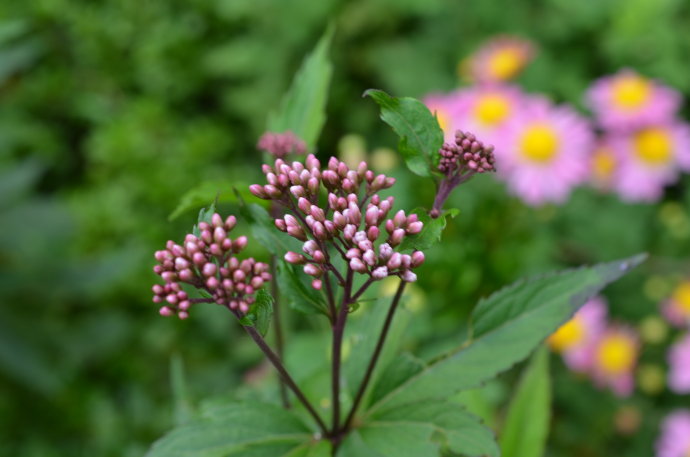As a popular fruiter native to southeastern China and Japan, loquat tree, especially its leaves, is packed with health benefits. So, what is loquat leaves good for? Actually loquat leaf, the main medicinal part called Pi Pa Ye in mandarin, is traditionally used for a variety of coughs, such as wheezy cough, kid's coughing, Chronic Bronchitis, coughing with mucus, itchy throat and cough, chronic cough, and more. Besides, loquat leaves as medicine can also help Acne, weight loss, hair growth, Diabetes, etc. In terms of the name pipa, you may not know that originally it refers to the Chinese lute, a plucked string instrument with a fretted fingerboard. This medicinal plant shares the name pipa just because its leaf resembles this musical instrument.
It is small evergreen tree, about 10 meters in height. Stout twig is yellowish-brown, and covered with dense rust or gray-brown hair. Leathery leaves are lanceolate, oblanceolate, obovate or elliptic-oblong, 12 to 30cm long, 3 to 9cm wide, with acute or acuminate apex and cuneate or attenuate-petiole base. Panicle is acrogenous; peduncle and calyx are densely covered with rust tomentum outside; white flowers are 1.2 to 2cm in diameter; styles are 5 and free. Pome is spherical or oblong, 2 to 5cm in diameter, and yellow or orange. Seeds are 1 to 15, spherical or flat spherical, 1 to 1.5cm in diameter, brown, shiny, and with papery seed coat. Bloom time is from October to December and fruiting time is from the following May to June. In China it is mainly cultivated or uncultivated in Gansu, Shaanxi, Henan, and the Yangtze River.
LOQUAT LEAVES BENEFITS
Often planted as an ornamental plant in park or backyard, loquat tree is known for its versatility – all its leaf, fruit, root, and nut can be used medicinally for many types of coughs; its edible fruit is sweet, juicy, tasty, and with very high nutritional value; its reddish brown, hard, and tough trunk is a perfect timber for manufacturing walking stick, wooden hammer, wooden clubs, etc.; its flowers are an excellent nectar source. Unlike most fruit bearing trees, loquat blooms in the autumn and early winter and fruits ripen in next spring and early summer. Because of that, it earns also the title as "the only fruiter that possesses the properties of all 4 seasons." In addition, known as one in the "Three Sisters in Early Summer".
As mentioned above, loquat tea is an effective home medicine for cough. To better understand how this herb works, let's figure out what is cough and what helps coughing in the first place. Western medicine believes that coughing is the body's protective respiratory reflex action, which is caused by the urge arrived at cough center located in the medulla oblongata of the brainstem via nerve fiber once the receptors in the respiratory mucosa are stimulated by foreign matter, irritant gases, respiratory tract secretions, and so on. The Shen Nong Ben Cao Jing Shu (Commentary on "Shen Nong's Classic of the Materia Medica) says: "All adverse risings, including retch, coughing, vomiting, are caused by fire flaring. Loquat leaf is of cold nature and good at descending qi, which thus stops the flaring up of fire and finally brings in to restore order. Similarly, the descending qi of loquat leaves can be used to other reversed scenarios, such as non-stop vomiting, dry mouth in postpartum women, diabetes in men, lung-heat cough, wheezing, shortness of breath, beriberi, cough accompanied by a fever, early menstrual periods, and more".

Loquat Leaves
LOQUAT RECIPES ON HERBAL REMEDIES
Based on the description from the Chinese Materia Medica, it is bitter and acrid in flavor and cold and non-toxic in nature. It goes to meridians of lung, heart, and stomach. Regular functions are removing heat from the lung to relieve cough, harmonizing stomach for descending adverse qi, and quenching thirst. Main loquat leaves uses and indications include lung-heat causing cough, yin-deficiency type cough, coughing up blood, nosebleed, and vomiting and hiccup due to stomach heat. Recommended dosage is from 9 to 15 grams, or 15 to 30 grams when used in fresh leaf, in decoction. Besides, it can be used in the forms of paste, pills, and powder.
1. Pi Pa Qing Fei Yin from Yi Zong Jin Jian (Golden Mirror of Orthodox Medicine). It is matched with Huang Qin (Scutellaria Baicalensis), Sang Bai Pi (Mulberry Root Bark), Zhi Zi (Gardenia), etc. to treat lung heat induced cough, reversed flow of qi, and shortness of breath.
2. Qing Zao Jiu Fei Tang from Yi Men Fa Lu (Precepts for Physicians). It works with Sang Ye (White Mulberry Leaf), Mai Dong (Mondo Grass), E Jiao (Donkey-Hide Gelatin), etc. to cure dry-heat cough and asthma, difficulty in coughing up phlegm, and dry mouth and red tongue.
3. Pi Pa Ye Yin Zi from Gu Jin Lu Yan Fang (Recorded Prescriptions in Ancient and Modern Times). It couples with Bai Mao Gen (Japanese Blood Grass) to heal warm disease accompanied with fever and sudden retch right after drinking water.

![Diseases, Symptoms, tcm, [tcmwindow.com]](/uploadFile/adImg/2015/11/11/f5cbfcc0-4df5-4646-9b9a-f316651a0199.jpg)





